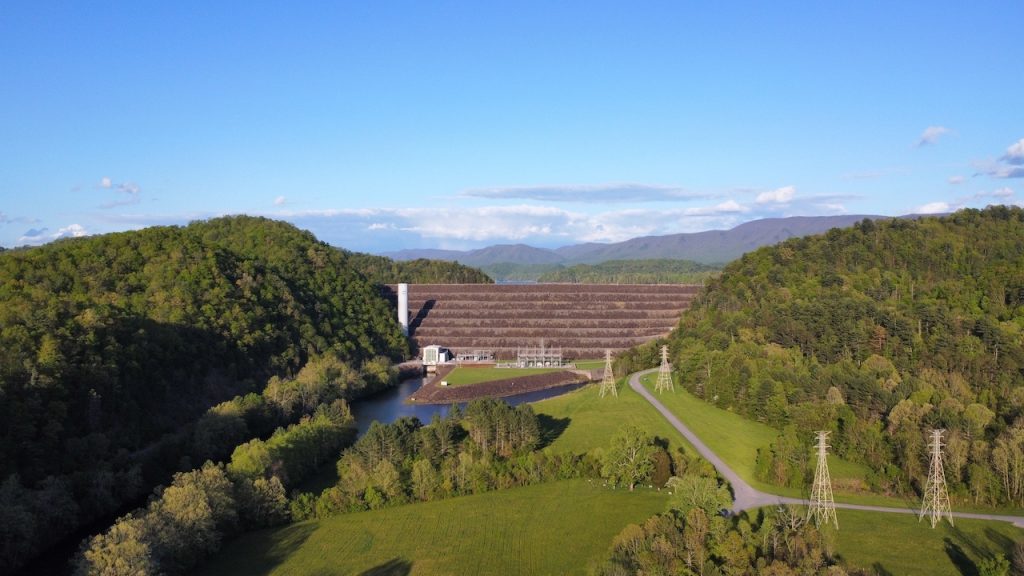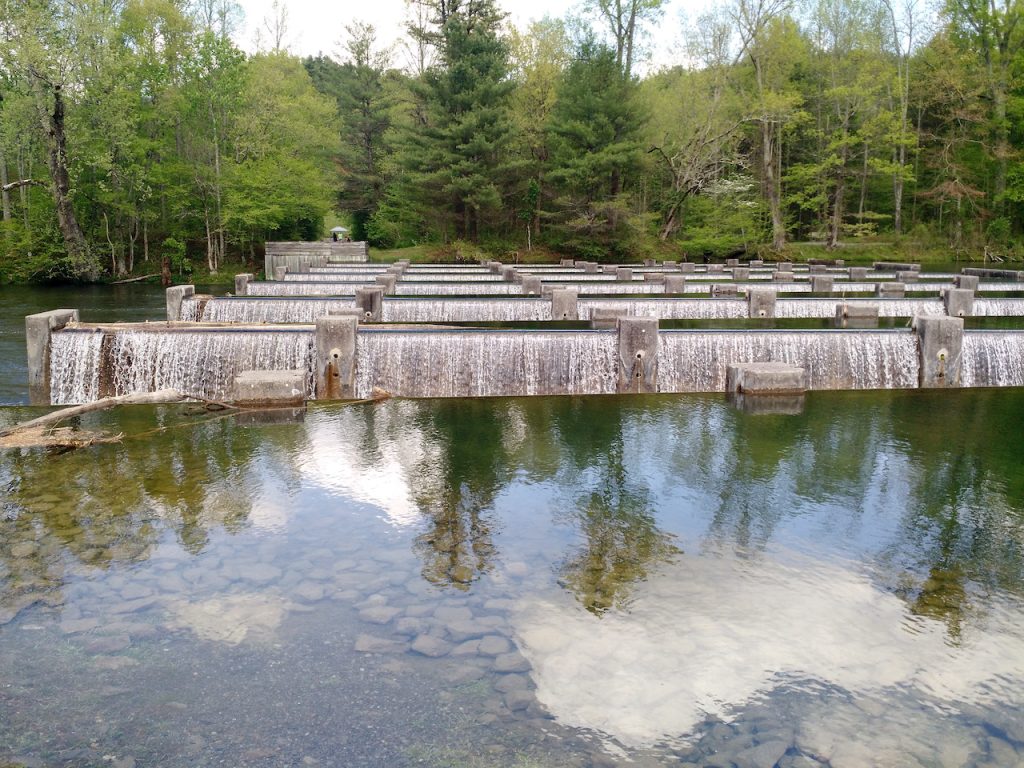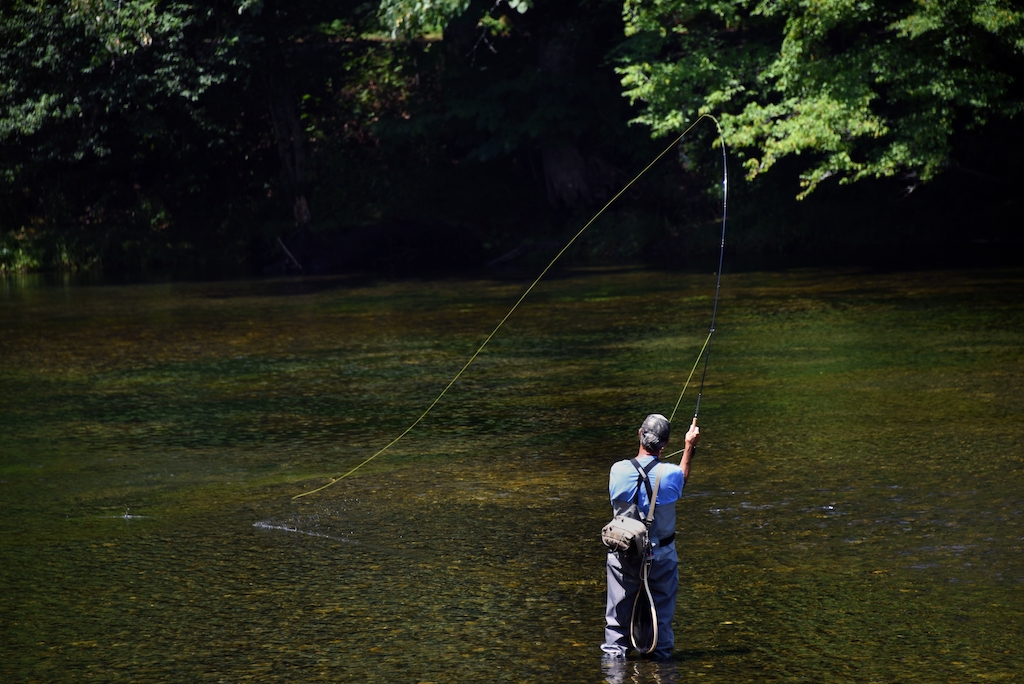South Holston Generation Schedule: Going With The Flow

Nestled in the Appalachian Mountains in northeastern Tennessee, the South Holston River, fed by the South Holston Dam, is a cherished gem in the world of fly fishing. Known for its amazing population of trout, including large brown and rainbow trout, the river has a reputation that extends well beyond the borders of the Volunteer State.
However, the South Holston River’s abundant fly fishing opportunities are not solely a product of nature. The operations of the South Holston Dam, specifically its generation schedule, play a pivotal role in shaping the river’s conditions and, consequently, the fly fishing experience. The dam’s generation schedule, which dictates when and how much water is released from the dam, impacts everything from the river’s water levels and flow rates to the behavior and distribution of its trout population.
Understanding this schedule is like deciphering a secret language – one that can unlock the river’s full potential for fly fishing. This knowledge empowers anglers to anticipate shifts in the river’s conditions and adjust their strategies accordingly, potentially leading to more rewarding and successful outings.
In this blog post, we will dive into the intricacies of the South Holston Dam’s generation schedule, explore how it affects the river’s flows and trout behavior, and provide practical tips for fly fishermen on how to use this information to their advantage. By the end, you’ll be equipped with a deeper understanding of this critical aspect of the South Holston River, allowing you to engage in a more informed and strategic approach to fly fishing.
Understanding The Need For Generation
A generation schedule is essentially a timetable established by a dam’s management agency, dictating when and how much water is released from the dam into the tailwater below. It’s called a “generation” schedule because these releases typically coincide with the dam’s power generation activities, as most dams are hydroelectric and generate electricity by releasing water to turn turbines.
The schedule is influenced by a variety of factors, including electricity demand, reservoir water levels, downstream water requirements, and environmental considerations. As such, it can vary from day to day and season to season. Some dams release water on a fairly regular basis, while others may have more sporadic release patterns. The schedule is usually available to the public and can often be found on the dam management agency’s website or through dedicated apps.
Understanding the generation schedule is particularly crucial for fly fishermen. Why? Because the dam’s water releases dramatically impact the downstream river’s conditions – the water levels, flow rates, and temperature all change, influencing the behavior of the trout. For instance, a large water release can stir up food sources, leading to increased trout activity and feeding – a prime time for fishing. Seems like the fish always start biting right before the flood gates open and you have to get out of the water. With these sudden changes in water levels, it can also pose safety risks, making it essential for fishermen to be aware of the schedule.
In essence, the generation schedule serves as a key to unlocking a more predictable and safer fly fishing experience on the South Holston River. By understanding it, anglers can anticipate changes in the river, fine-tune their fishing strategies, and maximize their chances of a successful outing.
Understanding The Flows
The generation schedule of the South Holston Dam directly affects the water flow in the South Holston River. When the dam releases water – typically during its power generation activities – the water levels and flow rates in the downstream river increase. Conversely, when the dam is not generating power, the river’s water levels and flow rates drop.
These changes in water flow can exhibit certain patterns. For example, if the dam typically generates power in the afternoons, the river’s water levels might be predictably higher during those hours. Similarly, if the dam reduces its generation activities during the night, the river might be at its lowest levels in the early morning.

Seasonal changes are also important to consider. During periods of high electricity demand, such as hot summer months when air conditioning use peaks, the dam might generate power more frequently, leading to more frequent or larger water releases. In contrast, during periods of heavy rainfall, the dam might reduce its power generation activities to prevent flooding, leading to lower river levels.
Understanding these patterns and seasonal changes is key for fly fishermen. By aligning their fishing activities with the generation schedule, anglers can take advantage of the changing river conditions to improve their chances of a successful catch. Additionally, being aware of these patterns enhances safety, allowing fishermen to avoid periods of potentially dangerous high water levels. There’s nothing worse than seeing that brown wave heading toward you while you’re still in the middle of the river trying for a last minute catch.
The Impact on Fly Fishing
The ebb and flow of the South Holston River, as dictated by the dam’s generation schedule, significantly affects trout behavior and distribution, and thus, the South Holston River fishing experience you will have. With the release from the dam, the river’s flow rate and water level rise significantly and quickly. This can stir up food sources from the riverbed, prompting trout to become more active and move into feeding lanes. Conversely, when the water level drops, trout often retreat to deeper pools or runs, becoming less active. This certainly makes for a hard time floating the river by drift boat when they’re not generating. Because of the shallow nature of the river, it’s near impossible to float on low water. This makes us run to the nearby Watauga for our guided float trips.
As a fly fisherman though, adapting to these changing conditions is essential. During high water flows, you should consider using heavier flies and stronger tippets to get your fly down to the trout’s feeding lanes when you’re wade fishing. There aren’t many spots one can wade fish during generation though, so it’s best to float during this time.
Also, always remember to focus on areas where trout might congregate to avoid strong currents, like eddies or slack water near the bank. In lower water conditions, a stealthier approach is usually necessary. You should use lighter tippets and leaders and focus on deeper pools where trout might be hiding.

The Weir Dam
One amazing feature that we have on the South Holston is the weir dam. The weir dam was constructed 41 years after the South Holston Dam was commissioned as a way to enrich the water quality with better dissolved oxygen concentrations. This helps play a tremendous role in providing the perfect aquatic environment for both insects and trout to thrive in. This has been a pivotal addition to the river that has helped support natural reproduction of wild brown trout in the river. It boasts a staggering 8,500 wild brown trout per mile! Features like the weir do more than just provide a great environment for fish to thrive though. It also plays a huge role in providing a safe downstream flow management for recreational users like boaters and fishermen to enjoy.
Safety Considerations
Safety is paramount in all these conditions. Higher water levels mean stronger currents, which can pose significant risks. Always check the generation schedule before you go, stay aware of changing water levels while you’re fishing, and never wade into water that’s flowing too fast or too deep. Fly fishing is a pursuit of patience and respect for nature, and part of that respect includes understanding and adjusting to the rhythms of the river.

Conclusion
Understanding the South Holston generation schedule is not just a valuable asset – it’s a crucial factor for successful and safe fly fishing. This schedule shapes the river’s conditions, influencing the behavior and distribution of the trout that make this river a fly fishing mecca.
From anticipating increases in water flow that can stir up food and make trout more active, to adjusting your fishing techniques in response to varying water conditions, mastery of the generation schedule empowers you to fish more strategically. It also enhances safety, allowing you to avoid potentially dangerous situations caused by sudden changes in water levels.
Incorporating this knowledge into your fishing strategies can significantly enhance your fly fishing experience. It’s like having a cheat sheet to the river’s moods, providing insights that can lead to more rewarding and successful outings.
So, the next time you plan a fly fishing trip to the South Holston River, remember to check the generation schedule first. Let the rhythm of the dam’s operations guide your fishing strategies. In doing so, you’ll not only become a more informed and responsible angler, but you might also find that the river rewards your respect and understanding with the catch of a lifetime.
